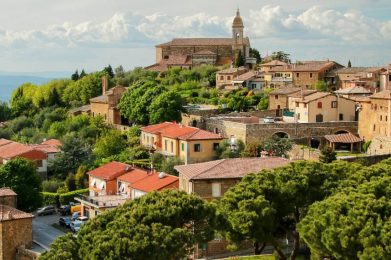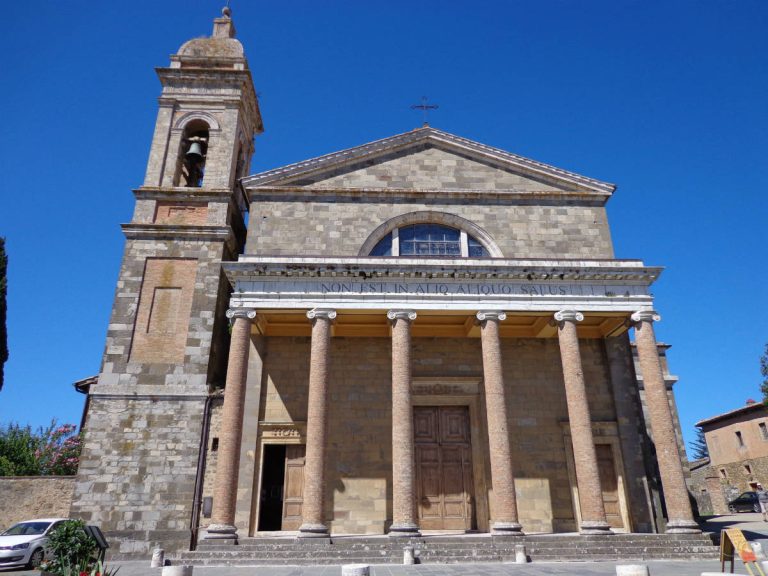The Cathedral of the Most Holy Savior, Cathedral of Montalcino, stands in the heart of the village where the Romanesque parish church dedicated to the same saint once stood, built around the year 1000 and elevated to a cathedral in 1462 by Pope Pius II. The present building, an imposing landmark in the historic center along with the fortress, is the result of a neoclassical reconstruction designed by the Sienese architect Agostino Fantastici between 1818 and 1832, and was consecrated in 1844.
On the outside, the sober and bright façade is striking, preceded by a tall pronaos supported by six Ionic columns, where the Latin inscription “Non est in alio aliquo salus” (“In no one else is there salvation”) stands out.
The elegant and harmonious interior has three naves punctuated by Ionic columns; the central one is covered by a partially coffered barrel vault, while the side naves have flat ceilings. Among the art treasures housed, two early works by the Sienese Mannerist painter Francesco Vanni stand out: the Immaculate Conception with Jesus and God the Father (1588) and St. John the Baptist in the Desert. In the Suffrage Chapel, on the other hand, a 16th-century Sienese school painting depicting St. Michael the Archangel driving out rebellious angels can be admired, while the sacristy houses Francesco Nasini’s painting (1647) of Our Lady of the Assumption among angels and Saints Hippolytus and Cyprian.
The chancel houses the monumental high altar, designed by Fantastici and decorated with statues of angels and a tabernacle in the form of an Ionic temple. On either side are the wooden bishop’s chair (16th-17th century) and the 19th-century choir stalls. Also noteworthy is the pipe organ built by Nicomede Agati in 1858, which is still functioning today.
The Cathedral of the Most Holy Savior is thus not only a place of worship but also a treasure chest of art that tells the religious and artistic history of Montalcino, from the Middle Ages to the 19th century.


